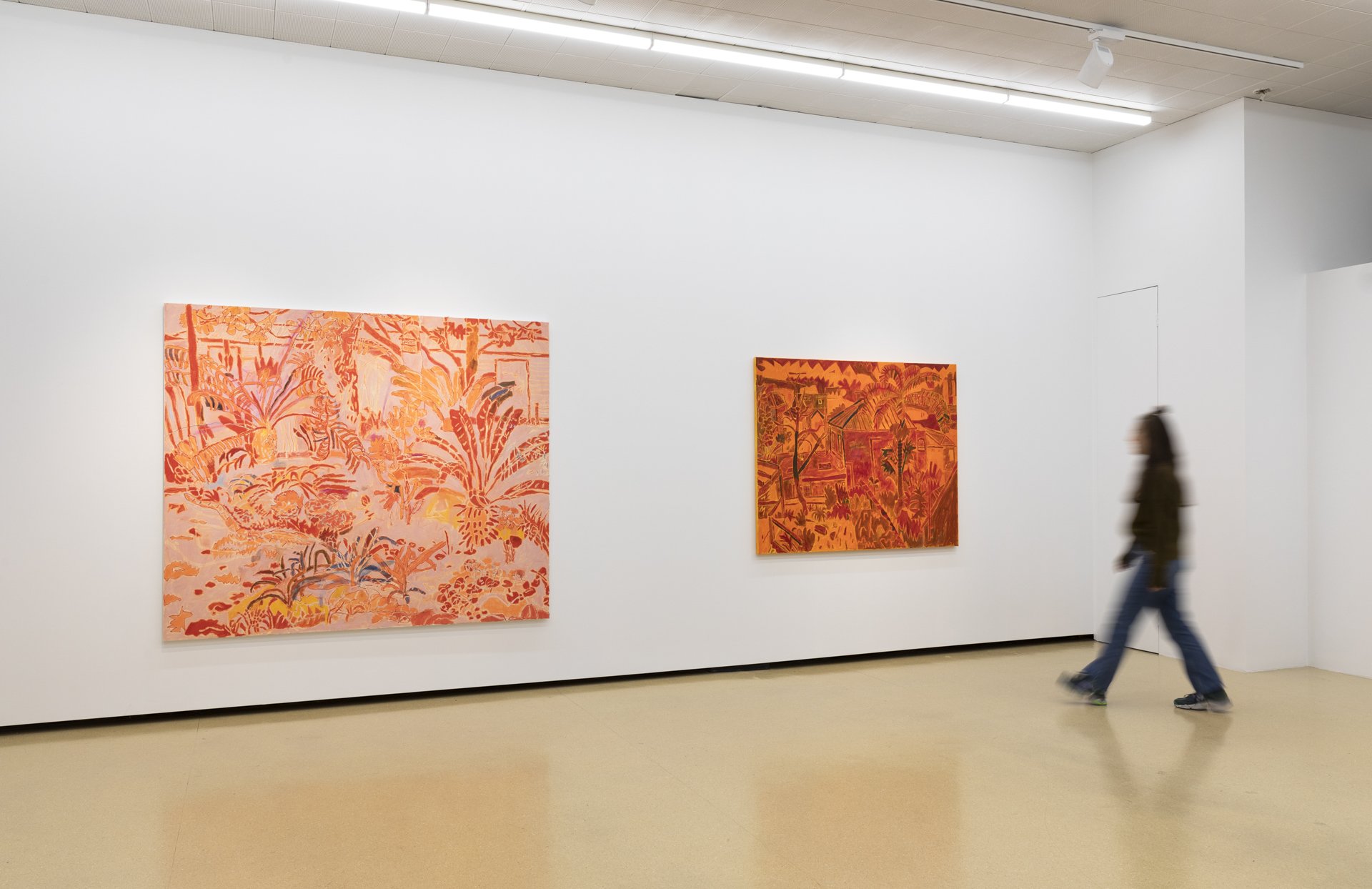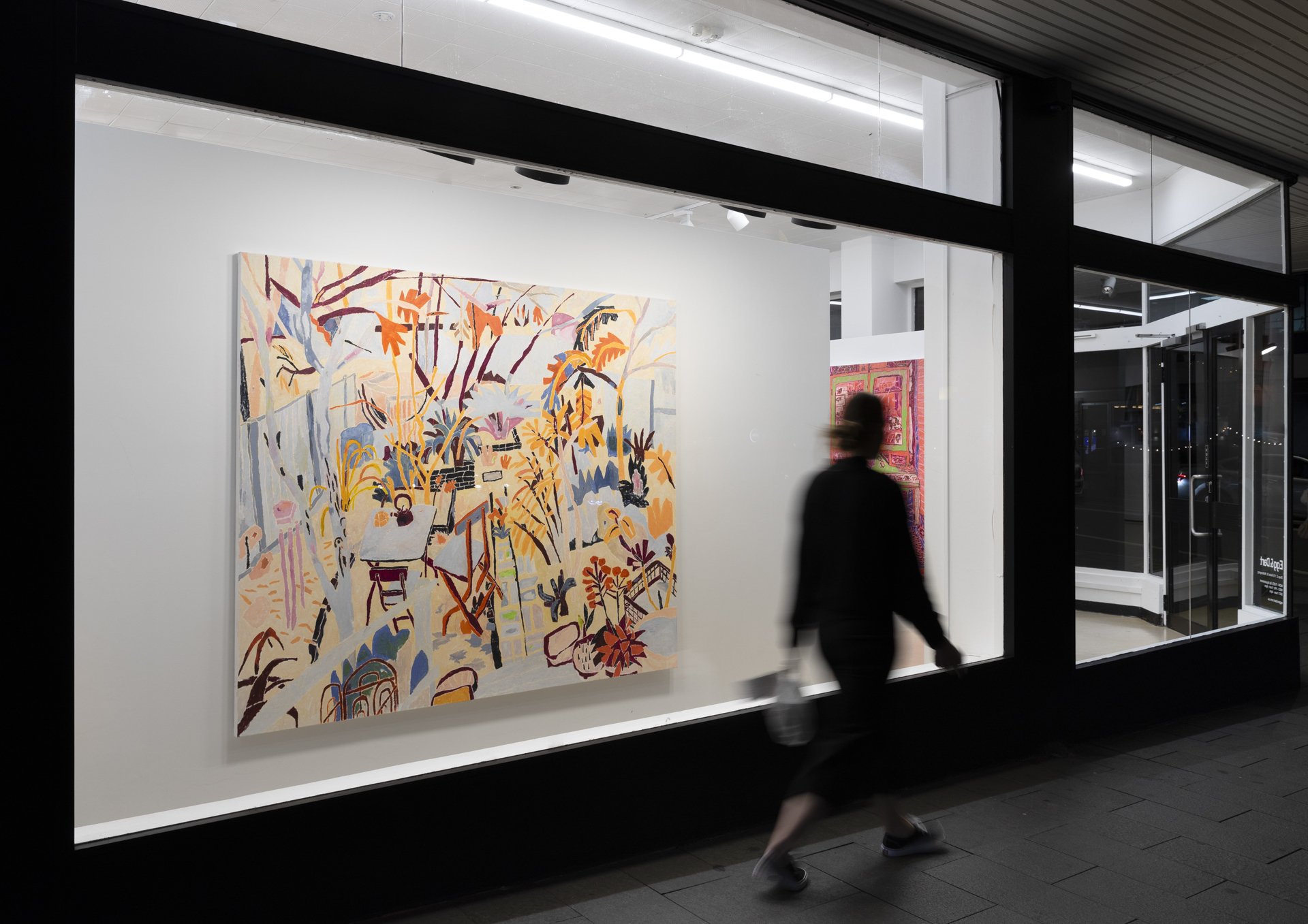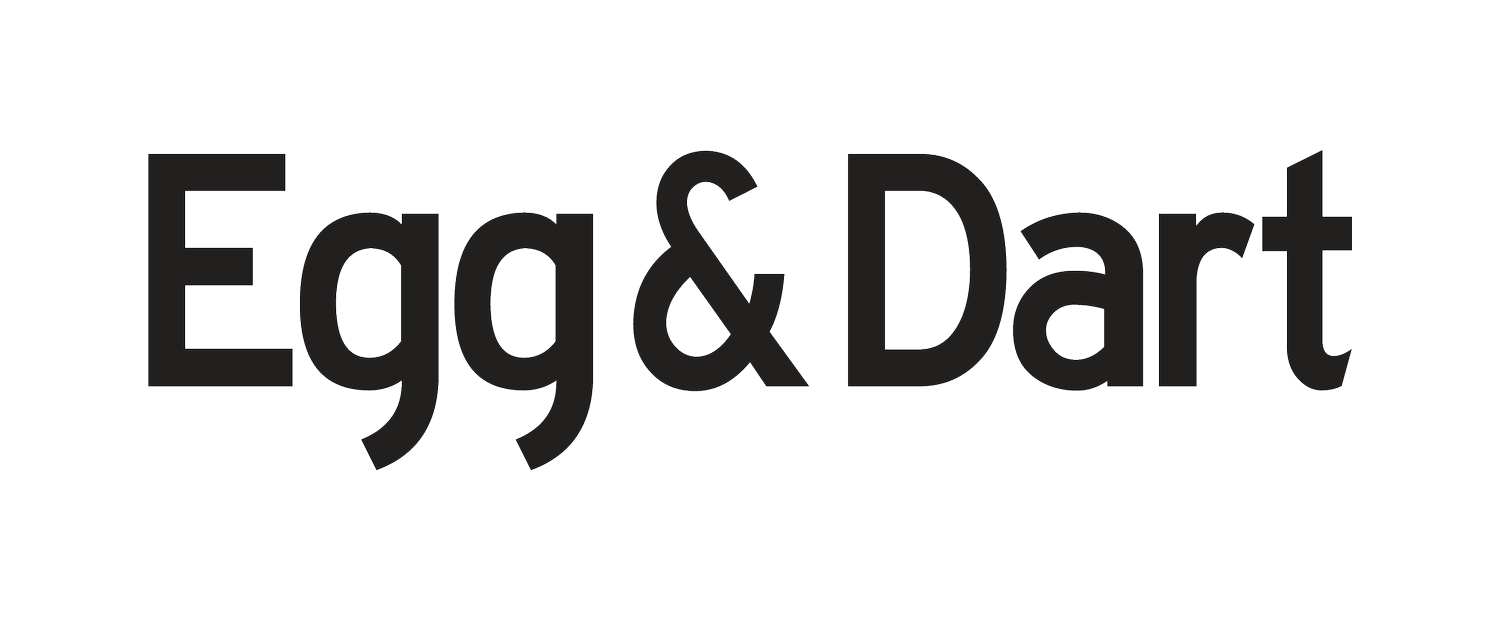
SEAN CROWLEY
NEXT TO, BELOW
26 July - 17 August 2024
Sean Crowley’s new works are a process of in-situ discovery, made almost entirely on-site in the gardens of friends and family. The size mirrors the expansiveness of his subject, which he essentially used as his studio. With dimensions reaching beyond two metres, the show effectively transforms the gallery into a garden. The new works are oil stick on canvas, continuing the dynamic drawing technique of his pastels. However, this new medium introduces a unique resilience and responsiveness to the canvas. As the artist states, “Drawing is definitely where I come from,” a sentiment reinforced by his recent period at the Royal School of Drawing in London.
Next To, Below navigates the gardens of friends and family, where the artist has felt comfortable moving large canvasses around. There are also rich conceptual parallels between these works and the idea of the garden. Ambiguity of depth and position can be found both in the experience of the garden and in these works. The interplay of planting, structure and movement in a garden responds to the layering capacity of oil sticks. Oil sticks can make gestural marks, ascend into patterns, and mark out edges, but then can be pushed back just like oil paint, erased or smudged into another hue. The oil stick can be dug back into the ground. Private gardens are contained arenas, but they also push outward. Vegetation creeps beyond fence lines, trees cast shadows, and wind chimes are heard beyond the walls. Crowley’s work has similarly been described as expanding beyond the frame. Crowley states, “Someone was saying they are a bit like textiles, and I like that connection in some of them. Maybe that’s connected to just thinking about the physical presence of paintings. I like the idea that they are both alluding to a space but also have a physical presence.”
A two-metre-wide painting requires the artist to move physically, connecting with Crowley’s interest in how we perceive and experience space in motion. “A person‘s perspective in space is always moving – not just the way you move your head around, but that perception of your environment, being in a space. If you’re drawing something in front of you and you have to then move two metres, your relationship changes a lot. Definitely, in doing these larger paintings, there are implications of the way that does impact making a drawing in that space.”
The titles insistently lead us back into the paintings, urging us to keep looking. There is a unique synthesis in terms of colour in this collection, so it is surprising to learn from Sean Crowley that, at least initially, the oil stick is applied instinctively. Each hue responds to the one applied previously, which then reacts to the surface treatment used at the start. He states, “If you have a few red colours and then you’re working on a purple ground, and the next painting you have a green background but the same red colours, it works in a refreshed way.”
The works are ablaze with colour that can integrate but also compress space, dropping a filter over the scene. There is a genuine feeling of being in motion, whether shifting position in a fold-up chair or traversing a path. Sean Crowley is interested in how movements in position can lead to adjustments within one work. One divergent interior has as its anchor a centrally placed sideboard described in warm hues like French Vermillion pierced with lime greens. More minor decorative elements are pushed forward. Carved lines on the right suggest a single vanishing point; otherwise, we can feel a reassembling of elements. Postcards and patterns of animals are applied in a more linear manner as if they were attached to the painting. In discussion, Crowley consistently returns to the action of the work. “That process of looking is both a very grounding component, but also, that’s where I find my challenges, where I find the discoveries are made, and where variation comes between the different compositions.”
An elemental approach to space here speaks to Sean Crowley’s earlier experiences as an architect (or perhaps to interests that pre-date any study). He studied and practised in architecture and urban design for a time before gaining a Bachelor of Fine Arts and a Graduate Diploma at the National Art School in Sydney. Considering the work on show here, he speaks of cornerstones of spatial design. “You have a wall that is flat, a door that is a hole or an aperture, then layer on the human elements.” In describing this, Crowley touches on something active and exciting that working on-site offers. These core spatial concerns – where we are in relation and among things – are vital to navigating the significant new works in Next To, Below.








